I’m snowshoeing through Colorado’s Rocky Mountains when I see a small, nondescript bird at the far edge of the creek. I look down to adjust my binoculars, fumbling with my gloves. When I look up again, the bird is gone.
Water ripples along the ice-edged creek. The wind rattles bare aspen branches. There’s no sign of the bird.
Then a dark shape rockets out of the water onto the ice. Oh. That’s where the bird went. It devours its prey, does a quick bob-and-shake move, and then dives back into the creek.
I’ve just found an American dipper, a chunky, lively aquatic songbird of the American west. Yes, that’s right. Aquatic songbird.
Now Dip, Baby, Dip
American dippers are oddballs of the passerine world. Along with the four other species in their genus, Cinclus, they’re the world’s only aquatic songbirds, or passerines. They’re sometimes known as water ouzels.
American dippers are small and chunky — about the side of a robin — with grey-blue plumage, a brownish head, pink legs, a short tail, and a white eyelid. Males and females look the same, while juveniles are a dull grey, without any blue tones.
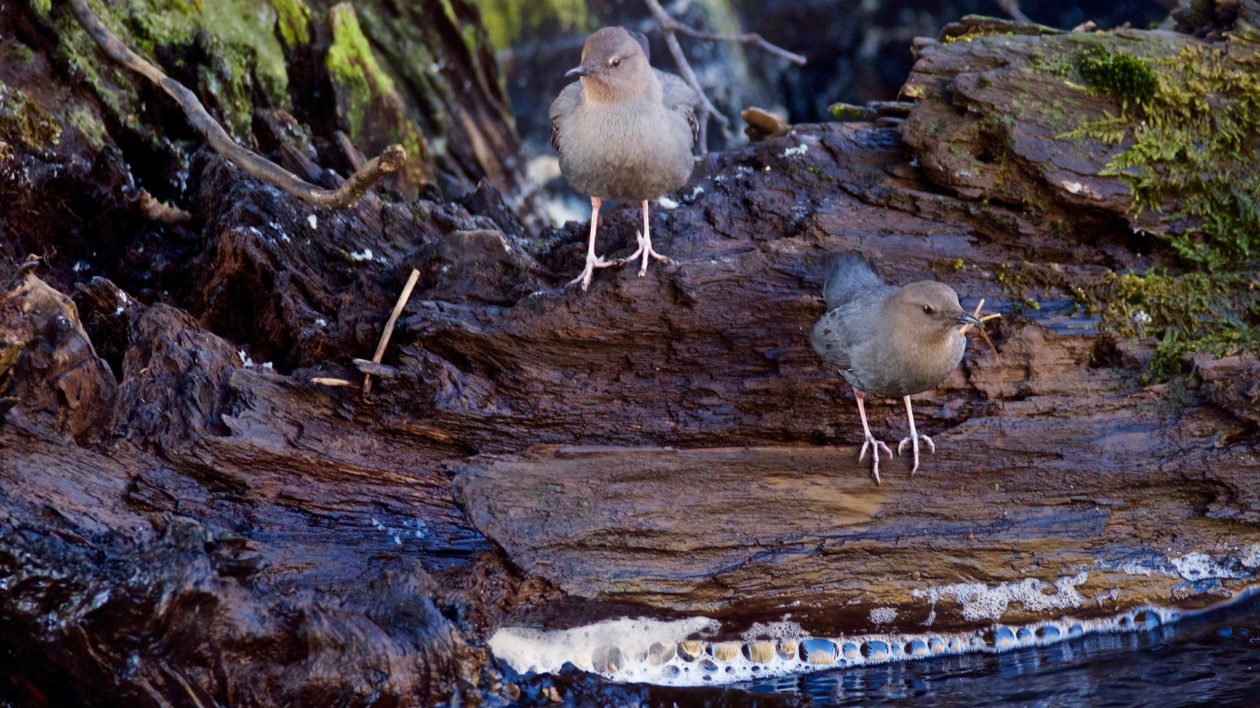
They’re found in high-altitude areas of the west, including Alaska, the Rocky Mountain states, and down through Central America along the spine of the Sierra Madre. In the US, dippers are altitudinal migrants, meaning that instead of migrating across continents, they move up and down a mountain with the seasons. In summer they spread across the higher elevations to breed, but as the winter cold closes in they retreat to lower-elevation streams with free-flowing water.
Once you see a dipper, you immediately understand why they’re called “dippers.” These birds never seem to sit still. Even while scurrying along a creek, they’re constantly bobbing and dipping their bodies up and down, like an endearing nervous twitch. One photographer observing dippers noted that the adults bob around 50 times per minute when they’re excited, disturbed, courting other dippers, or feeding.
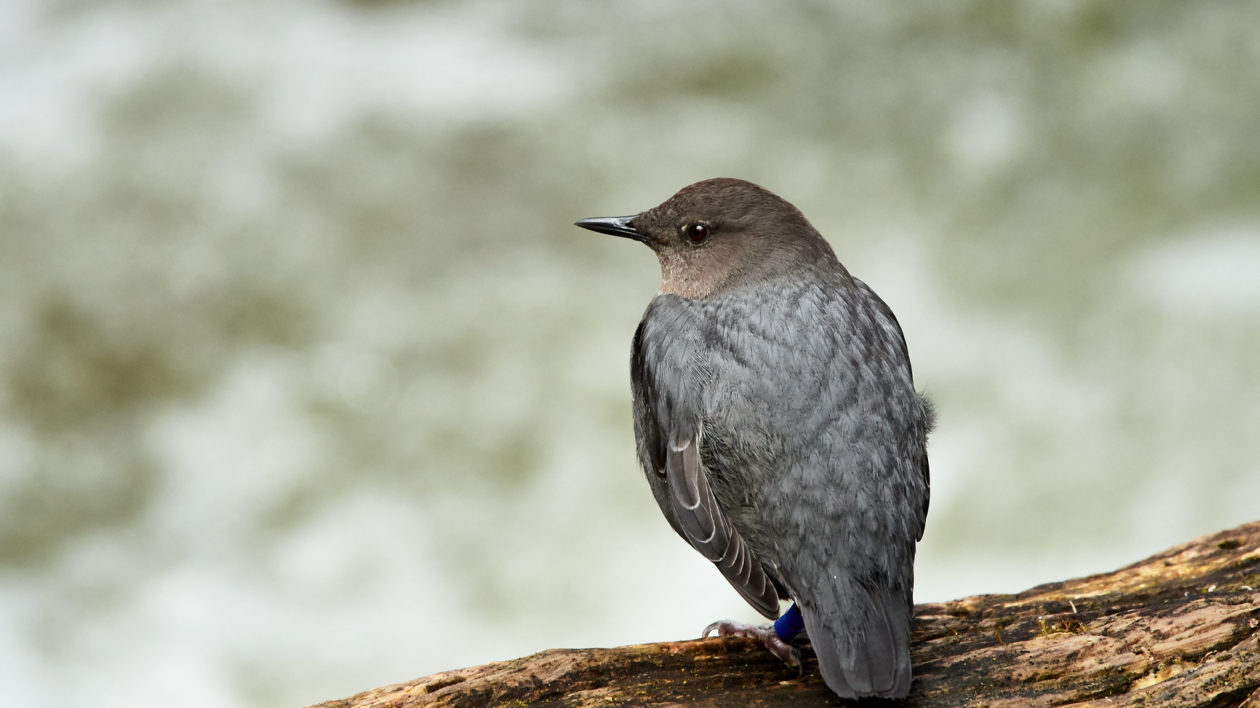
The dipping, and their habit of dunking themselves into nearby streams, makes them easy to identify — if you can find them.
Another clue that a dipper could be nearby is its song: a clear, ringing call with lots of variable, buzzy notes. If you’re terrible at birding by ear, like me, then it’s easy to confuse their calls with other passerines. I’d find myself gazing into the trees, only to realize that the dipper was splashing in the water at my feet.
A dipper’s diet is all things aquatic. If it’s found in a mountain stream, and is small enough, there’s a good chance that a dipper will eat it. Aquatic insects and their larvae — including mayflies, mosquitoes, and midges — are favorite dipper foods. They will also consume small fish, fish eggs, dragonflies, and worms.
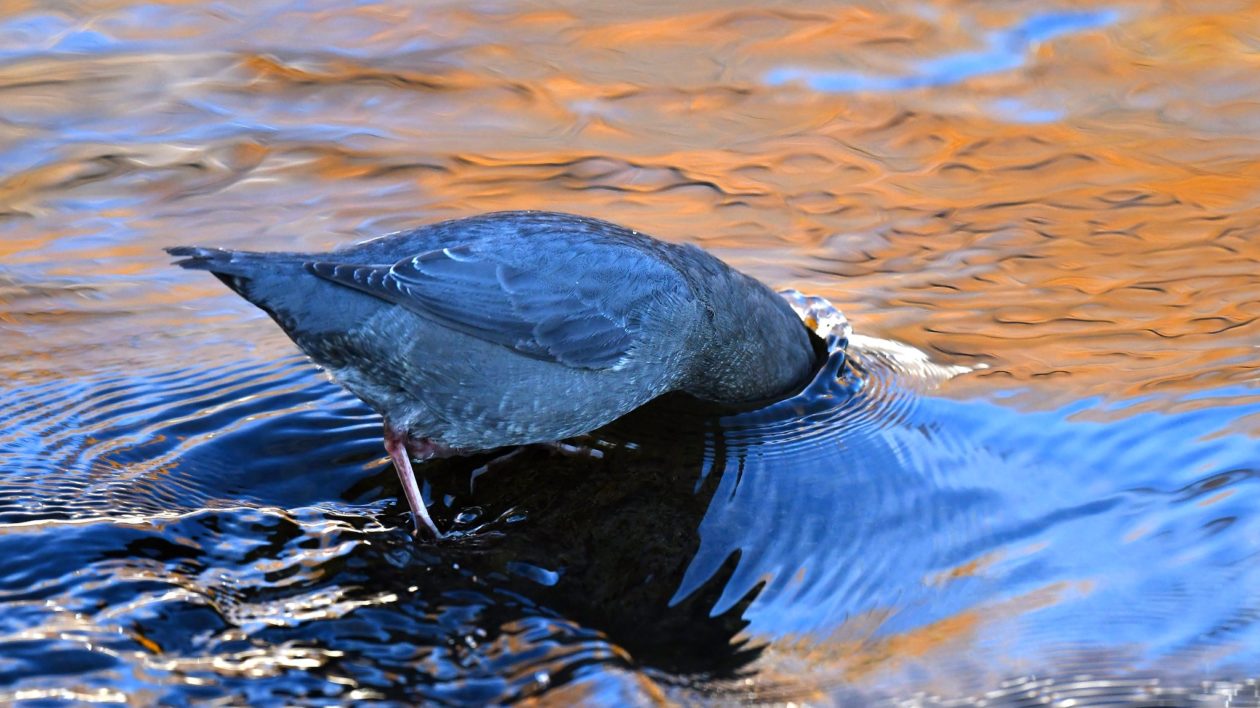
Hover, Dunk, Dive, And Swim
Dippers employ a variety of foraging strategies. They will walk along the water’s edge like a heron, plucking prey from the shallows. Sometimes dippers forage by standing on a rock in the middle of the stream and dunking their head into the depths (my favorite). They will also dive underwater or beneath ice, either swimming with their wings or walking along the stream bottom in search of prey.
None of this would be possible without a few nifty adaptations. To survive cold mountain winters, dippers have low metabolic rates, thick down feathers, and the ability to carry extra oxygen in their blood. They also have nostril flaps to keep water out.
Many people assume that their conspicuous white eyelid is a special membrane to help them see underwater… but it’s just a normal bird eyelid with white feathers. (Scientists aren’t quite sure why their eyelids are a different color.)
Dippers pair up for the breeding season, raising their young in a dome-shaped nest built on a cliff, shoreline, or bank near fast-flowing water. Near human development, dippers will occasionally build their nests under bridges. Males and females work together to create a two-layered nest. The outer layer, made of moss, conceals an inner,cup-like chamber woven together from grass and leaves. The moss helps absorb water and moisture, keeping the 2 to 5 chicks inside the nest dry.
Adult dippers have an unusual molting pattern. Unlike other birds, which lose one or two feathers at a time, adult dippers molt all of their flight feathers simultaneously. This usually occurs around August, after breeding. The birds are flightless for about two weeks as they re-grow new plumage.
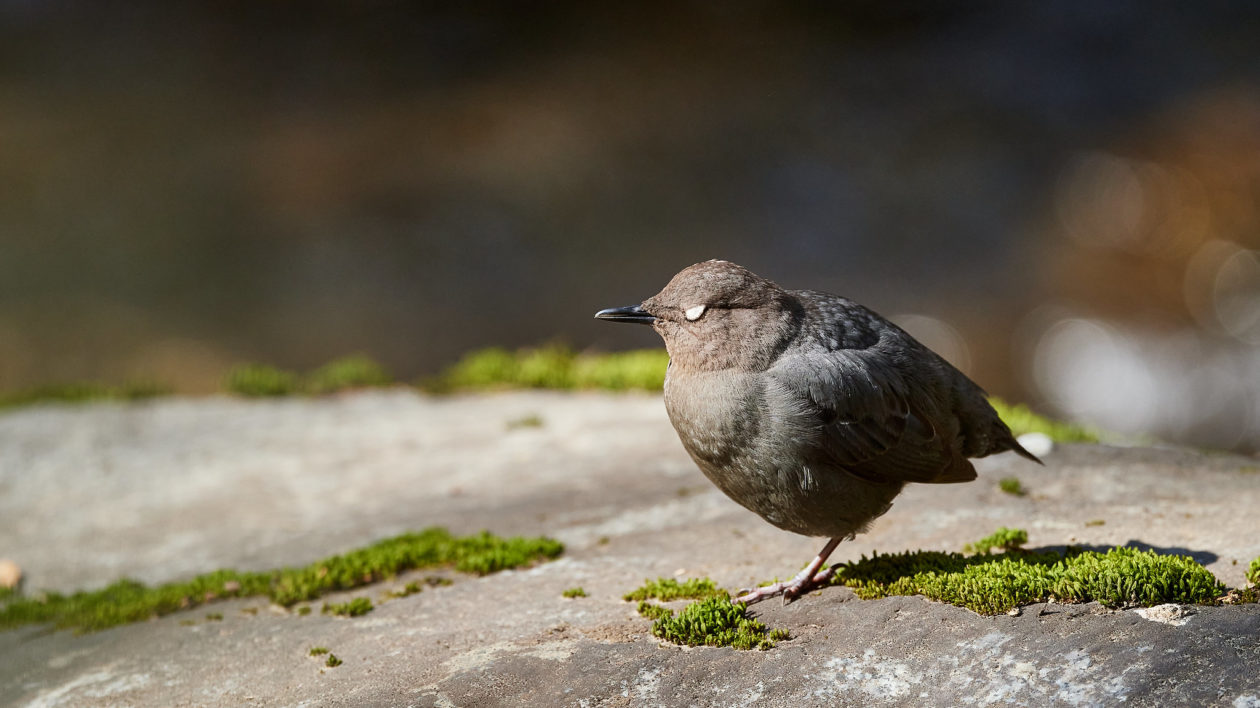
Winter Dipper Quest
You can find dippers on mountain streams year-round. When I lived in Colorado, I always found that dippers were easier to locate in winter, when they become more concentrated on the few low-elevation streams that keep flowing despite freezing temperatures. (And I suspect a snowy backdrop makes it easier to spot their bobbing antics, too.)
So the next time you head out to explore winter’s snowy stillness, keep your eyes peeled for the delightful dipper. You won’t be disappointed.
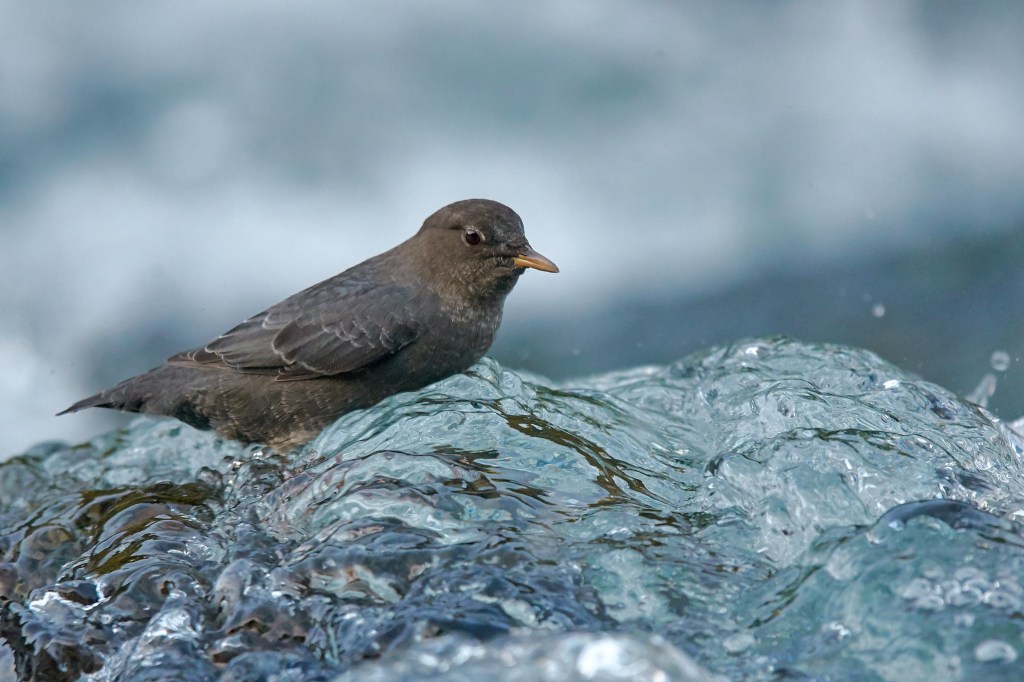



I chanced upon this page as I was looking for information on moor hen, swamp hen, coot and any other small water bird because I see so many of them, along with ibis and egret after rains when the creeks get full with water.
What a wonderful bird! Thank you for this article – the beautiful photos and the time and effort that have doubtless been put in for its content. The love and enthusiasm for wildlife of all concerned with it, shine through¬
We saw one today ( 10 February) in Zion NP. I was with my caregiver and was telling her about these birds we used to see. She said look there is a bird. It was a dipper! We watched it for a while as it went into the river and popped back up again. My caregiver is thoroughly urbanized and i don’t think she believes even half of what i tell her. But she did get to see a Dipper.
I grew up in southern Oregon, and dippers were common. Not at all shy, they’d ignore people on the paths next to the streams, and would work their way right through parks. As a child, I was absolutely delighted by them as they dipped and bobbed, but my favorite was watching them walk along the bottom of a shallow flowing brook, picking out things to eat, then hop on the shore. They’d do this again and again. Little bubble of air clung to their feathers and made them seem even more other-worldly. I’ve never lost my fascination for these birds. Living in Vermont, I miss them, and was absolutely delighted while on a train trip to the Northwest a few years ago when the train was slowing through a small canyon. There alongside the tracks was a small stream with a dipper working its way down the stream, moving almost as fast as the train at that point. I quickly caught several photos on my phone. Not very good, but they still remind me of the delight I felt at seeing THE bird of my childhood.
I saw one today on Bear Creak, just up from Morrison, CO…had no idea what my new favorite bird was…and you told me…thank you!
I recently witnessed an American Dipper in Oregon feeding on the carcass of a dead chinook salmon.